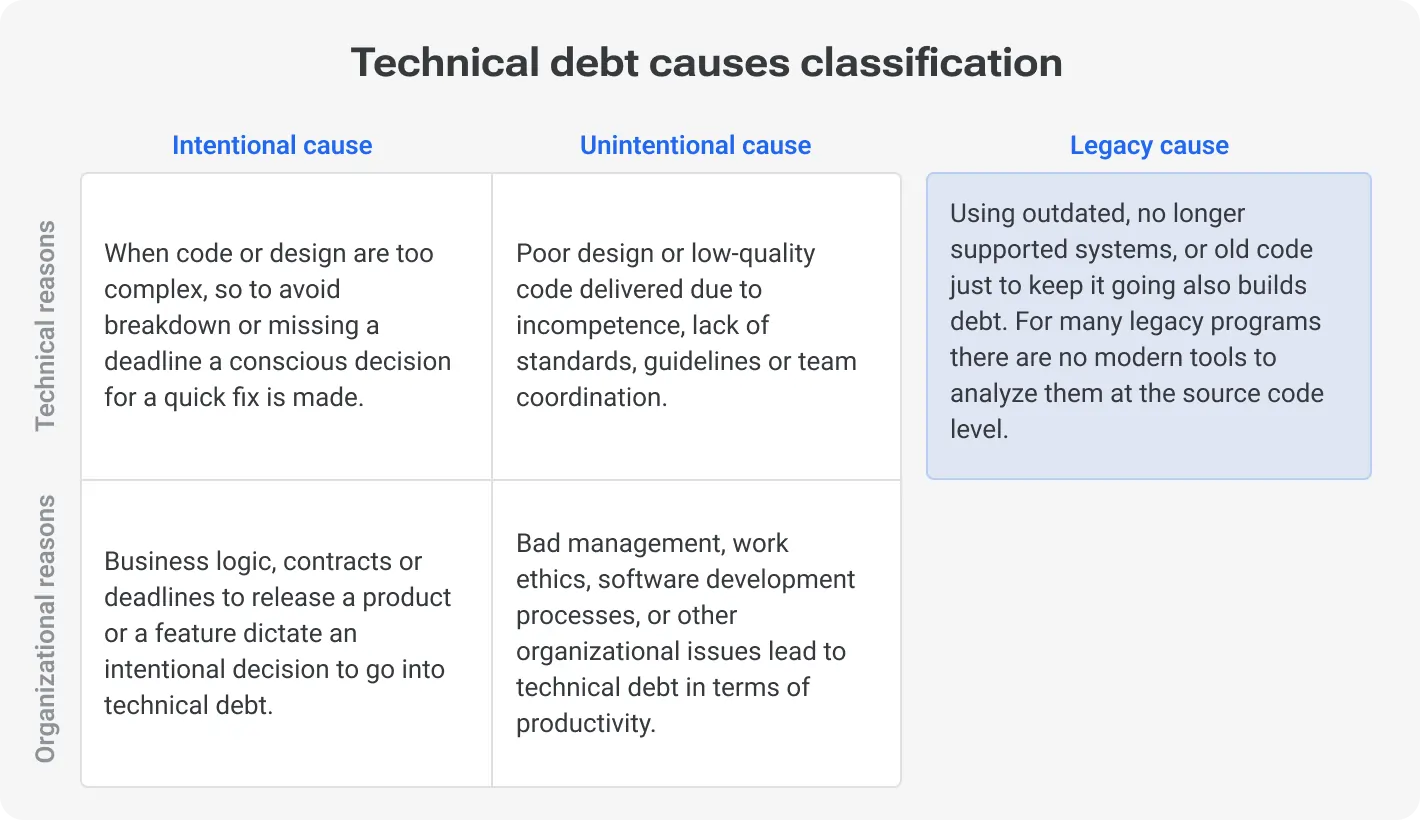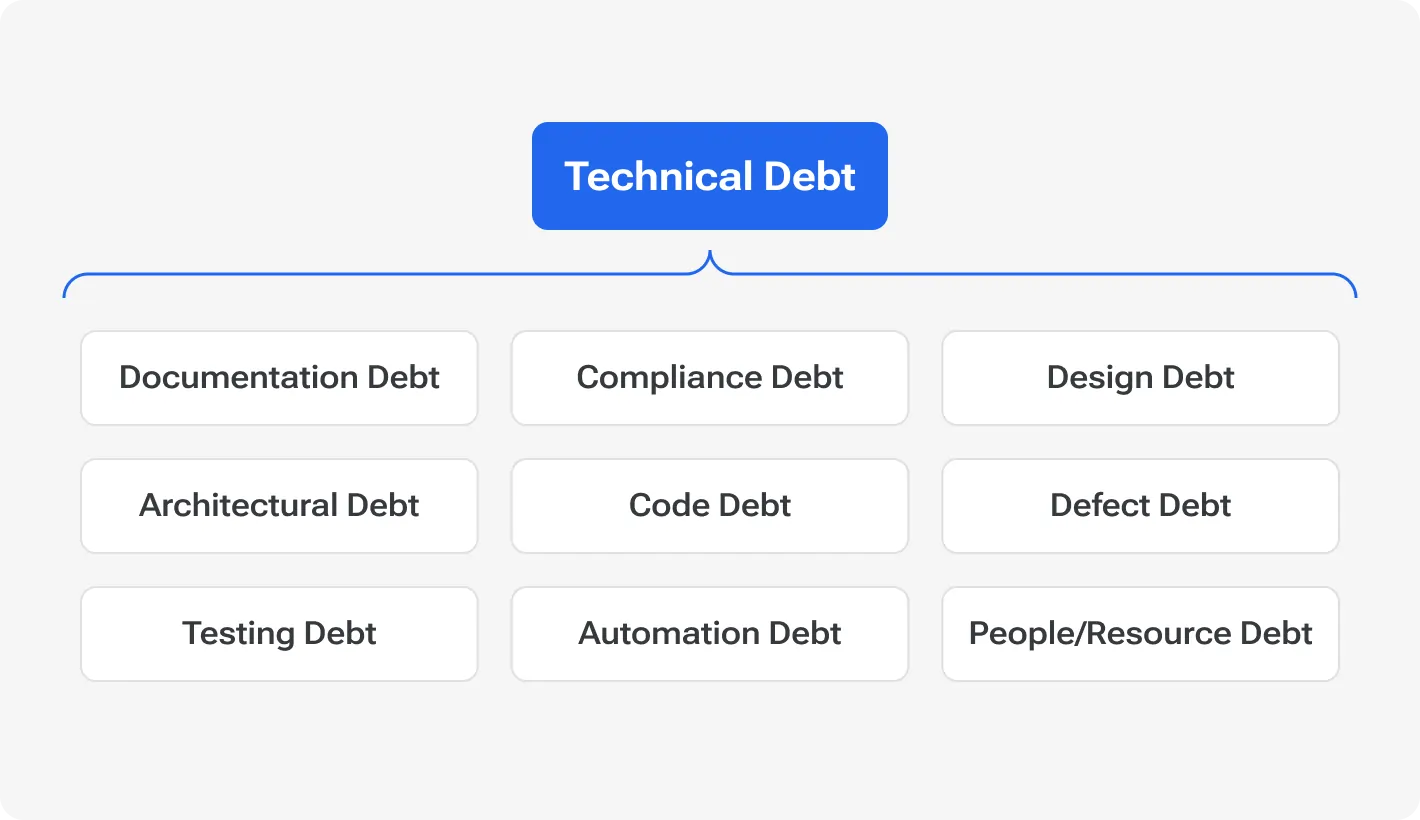The modern business world is too fast-paced, too competitive, and sometimes even fierce. All that forces business owners to push over the limits at any cost. With all due respect, we can’t help but admit that such businessmen try to achieve unrealistic goals by exploiting their workers, devs in particular. And now, follow us, such moves lead to rush development and cutting corners. Which leads to technical debt.
Okay, we don’t want to sound dramatic. That’s why we brought a relatively fresh study of Fox School of Business — tech debt decreases profit by at least 16%. To double down an effect, here is a famous case.
Recall Zynga, once a social gaming giant whose FarmVille phenomenon captivated millions. However, behind the charming facade, their codebase had become a tangled mess due to rapid scaling and pressure to meet user demands. This technical debt eventually choked off development and caused players to flee to greener pastures.
Of course, software debt wasn’t the one and only problem. It added up to a market fall, but still. Zynga's decline serves as a stark reminder of how even seemingly successful companies can be brought low by unaddressed technical debt, and the crucial role implementation plays in avoiding this pitfall.
At its core, technical debt is the accumulation of suboptimal or hasty decisions made during the software development process. Much like financial debt, the choices made to expedite development accrue interest over time, manifesting in increased costs, diminished agility, and heightened risk.
But there is another thing — technical implementation debt. This one goes beyond the generic concept, delving into the specific challenges encountered when implementing software without accruing debilitating debt. Let’s break it down.
Empower your IT team to focus on innovation and growth by outsourcing your technical debt management
What is Technical Debt?
Technical debt meaning goes beyond classical comprehension of a financial debt. But at its core, technical debt can be likened to the deferred cost of suboptimal decisions made during the software development process. But okay, that’s too boring. Let’s build the dream house. Grab your Lego and get the ball rolling.
Among many brick contests, we probably stop by THAC where people try to create an entire Lego story: to write a scenario, build a construction, film the plot, compile it in cohesive video, and present their works — all in 24 hours.
Sounds awesome. However, there is a thing: if you only knew how many incomplete buildings and unfinished movies remain after the final whistle. All because of the rush.
Metaphorically speaking, the dream about the house doesn’t come true. In the software realm, the contest represents the development process, and the rush mirrors the expedient choices made — perhaps skipping comprehensive testing, neglecting code documentation, or employing outdated technologies.
These shortcuts may provide immediate gains in terms of faster delivery (but there are also no guarantees) but accrue interest over time. Consequently, that leads to increased maintenance efforts, a higher likelihood of bugs, and reduced adaptability to evolving requirements.
Common Causes of Technical Debt:
Pressing timelines often prompts developers to opt for rush coding, sacrificing long-term considerations.
Misunderstanding each other can lead to both a bad atmosphere inside the company and inadequate architectural solutions (actually, not only architectural).
Insufficient testing, whether due to time constraints or negligence, leaves potential issues undiscovered until later stages.
Consequences of Technical Debt:
Deferred maintenance and additional work to address technical debt lead to higher costs in the long run.
Accumulated technical debt hinders an organization's ability to adapt swiftly to changing market conditions.
Shortcuts often result in compromised code quality, which causes a domino effect, where one malfunction is abruptly followed by others.
Technical debt examples and how to solve them
What is Technical Implementation Debt?
We can’t state that technical debt and technical implementation debt are apples and oranges, but they really have some differences. Simply put, technical implementation debt hones in on the challenges specific to the implementation phase.
This phenomenon encapsulates the consequences of hasty, suboptimal, or poorly executed decisions made during the actual deployment of software. When devs and testers take many shortcuts and make too many compromises (or just neglect best practices) — welcome technical implementation debt.
Here's what sets it apart:
Focus on speed over sustainability: The implementation phase often faces immense pressure to "go live" quickly. This leads to hasty decisions and suboptimal architecture choices, and at the end of the day, you get something like code Frankenstein — a product of rushing to bring amorph and incomplete creation to life. While the project might launch on time, the technical debt accumulated becomes a heavy anchor.
Lack of long-term vision: Not every business owner is a visioner. Yet, implementing software without considering future growth and scalability is like building a house with no room for expansion. In this case, you write code that can be compared to a patch on a garment. You hastily solve the current problem instead of looking at the root of it. Ideal conditions for technical implementation debt.
Inadequate communication and knowledge silos: Silos between teams, unclear requirements, and insufficient documentation during implementation create a breeding ground for misunderstandings and technical debt. Features built on shaky foundations of assumptions and conflicting interpretations lead to rework, wasted effort, and a codebase rife with hidden inconsistencies.
Consequently, the impact of rushed or suboptimal implementation reverberates through the entire software ecosystem.
The Long-Term Impact on Software Health:
Rushed implementations often lead to code that is challenging to maintain and modify. This way, you’ll allocate much more resources and efforts for ongoing maintenance tasks.
Neglecting tests and other important steps of implementation sows seeds of bugs. Skipping rigorous testing, the software is more prone to unexpected behavior, reducing overall reliability.
Poorly implemented code becomes resistant to changes and updates. This resistance impedes the agility of the software, hindering its ability to adapt to evolving business requirements.
Learn 8 metrics for measuring your technical debt
How to Avoid Deployment Debt: Three Simple Rules to Follow
The golden rule is being proactive in managing technical debt. While there is no magic bullet, we have at least three rules by following which you raise your chances to prevent deployment debt. Here we go.
1/ Discover Code Analysis Tools
Tired of checking the codebase? We feel you and propose to revise your approach — allow another software to check yours. Do you pass annual health checks? All that stuff like blood pressure checks, CT scans, lung volume checks, etc. This is the same for your software. Tools like SonarQube, Veracode, and InsightAppSec scrutinize your code for potential issues, from code smells to security vulnerabilities.
Continuous monitoring complements this analysis, providing real-time insights into your code's health. Tools like New Relic and Datadog monitor application performance, helping detect and address issues before they escalate. Ongoing code health assessment will help fortify your software against the pitfalls of rushed or suboptimal implementation.
Example: In the tech industry, there are many really worthwhile companies. But Netflix, probably more than others, is famous for its code quality. They leverage a suite of analysis and monitoring tools, proactively identifying and addressing potential issues. This vigilance has resulted in a remarkably stable and performant platform, handling immense traffic volumes with minimal downtime.
2/ Create Code Guidelines
You’re probably familiar with brand guidelines. This type of marketing material serves as rules and guides on how to design materials related to a particular brand. Similar coding standards serve as the bedrock for avoiding deployment debt. Code guidelines act as a blueprint for developers, ensuring a consistent and cohesive approach to coding. For instance, Google's stringent coding standards have played a pivotal role in maintaining code quality across its vast projects.
Leverage collaborative code reviews and ease off upholding these guidelines. Platforms like GitHub and Bitbucket allow seamless collaboration, enabling developers to review each other's code for adherence to standards. Of course, in the ideal world, double-checking should be performed only within a particular company. But we are not in the ideal world. At the same time, the benefits of code review practice enhance readability, maintainability, and reduce the likelihood of introducing technical debt.
Studies by the National Institute of Standards and Technology have shown that following coding standards can reduce development time by up to 20% and maintenance costs by as much as 50%.
3/ Test, Test, Test — and Automate It
Solid foundations are paramount for any structure, and software is no exception. For this reason, you could do with test-driven development (TDD). It’s a robust aider in tackling technical implementation debt. Ensure writing tests before code, and your developers will establish a strong foundation, ensuring that each component functions as intended. Microsoft, renowned for its emphasis on testing, attributes a significant reduction in post-release defects to TDD practices.
Automated testing further fortifies this defense. Consider using JUnit and Selenium to streamline the testing process, enhance code reliability and minimize the probability of introducing bugs.
Think of it as an assembly line for your code, ensuring each new change goes through rigorous quality checks before reaching production. Among the mentioned tools, there are also Jenkins and GitLab CI/CD that automate these processes, enabling faster releases and reducing the risk of introducing debt.
The 2018 CA Technologies study revealed that automating testing frameworks decreases defects by 50% and boosts development cycles by 40%. So, automation empowers developers to iterate quickly, experiment confidently, and build software with a strong foundation, minimizing the potential for technical debt accumulation.
To sum it up
Nowadays, tackling or – which is better – avoiding technical implementation debt is a non-negotiable imperative.
Remember that the consequences of technical debt extend beyond the immediate challenges of rushed or suboptimal implementation. They infiltrate the very fabric of software health, introducing maintenance nightmares, buggy terrains, and resistance to change.
We just want to make a point — try not to focus on deadlines but to take after the leaders of the technical industry (like Netflix), who put software quality above implementation deadlines. The recent data breach (the Mother of All Breaches) should serve as a reminder of the importance of testing and preventive practices.
Proactive practices, encapsulated in our three simple rules, serve as a beacon of guidance for tech professionals seeking to fortify their software against the encroachment of technical implementation debt in particular. From diligent code analysis and continuous monitoring to the establishment of clear coding guidelines and the embrace of test-driven development and automation, these practices form a formidable defense against the pitfalls of rushed implementation.
Gain an access to seasoned professionals specialized in managing technical debt








